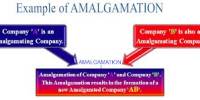Definition:
Profit and Loss Account is a standard financial document that summarizes a company’s revenue and expenses for a specific period of time, usually one quarter of a fiscal year and the entire fiscal year.
It is important that both investors and company managers be able to read and understand this document in order to understand the company’s financial condition. For a description of the line items typically found in a company’s income statement, read How to Read an Income Statement. You can also see a Sample Income Statement there.
Example Profit and Loss Statement
| Total revenue | $ | 1,000,000 | 100% | |
| Less | Cost of Goods Sold | $ | 426,200 | 42.6% |
| Gross Profit | $ | 573,800 | 57.4% | |
| Less | Expenses | |||
| Accounting and legal fees | $ | 11,700 | ||
| Advertising | $ | 15,000 | ||
| Depreciaion | $ | 38,000 | ||
| Electricity | $ | 2,700 | ||
| Insurance | $ | 15,200 | ||
| Interest and bank charges | $ | 27,300 | ||
| Postage | $ | 1,500 | ||
| Printing and stationary | $ | 8,700 | ||
| Professional memberships | $ | 1,800 | ||
| Rent for premises | $ | 74,300 | ||
| Repairs and maintenance | $ | 21,100 | ||
| Training | $ | 6,900 | ||
| Vehicle operating costs | $ | 20,000 | ||
| Wages and salaries | $ | 223,500 | ||
| Workers compensation | $ | 6,500 | ||
| All other expenses | $ | 14,100 | ||
| Less | Total Expenses | $ | 488,300 | 48.8% |
| Equals | Net Profit (BOS) | $ | 85,500 | 8.6% |
BOS = Before owners salary
















